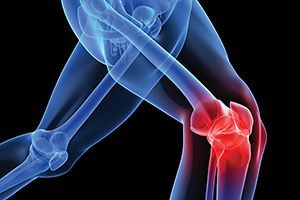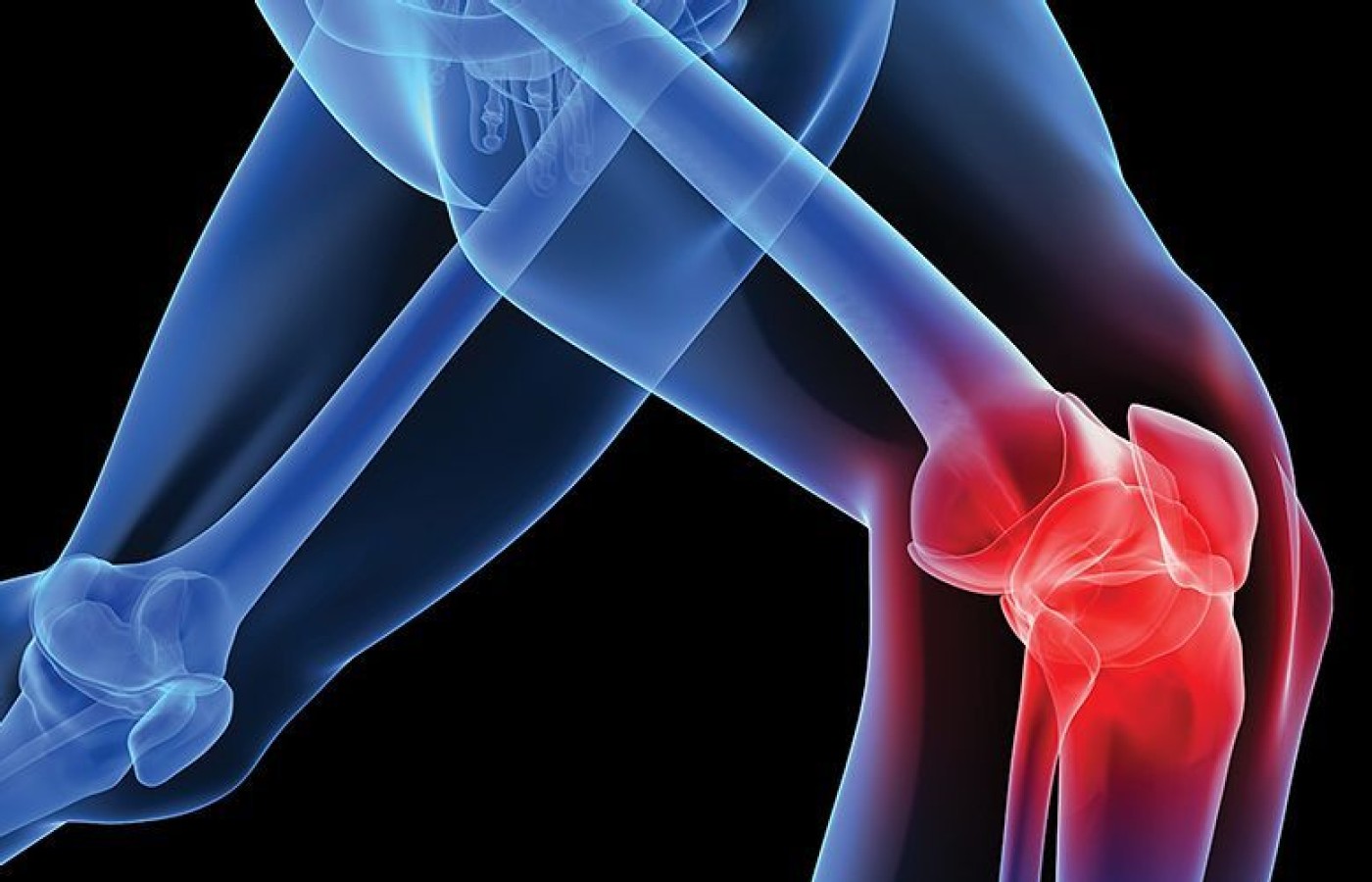New York's highest court of appeals has held that no-fault insurers cannot deny no-fault benefits where they unilaterally determine that a provider has committed misconduct based upon alleged fraudulent conduct. The Court held that this authority belongs solely to state regulators, specifically New York's Board of Regents, which oversees professional licensing and discipline. This follows a similar recent ruling in Florida reported in this publication.
Correct the PFPS by Correcting the Q-Angle
Knee pain, in its most generalized definition, is experienced by millions of people of all ages and in every walk of life. Its effect on lifestyle can range from slightly uncomfortable on a periodic basis to total debilitation. Treatment options reflect the level of severity: from a symptom-masking, over-the-counter pain reliever for the mildest cases; to chiropractic treatment and rehabilitative therapy; all the way to reconstructive surgery for the most damaging situations. As in many musculoskeletal conditions, early intervention and treatment can often prevent more serious problems later on.
A recent study covered in Reuters Health found that "while 85 percent of patients who underwent surgery showed clinically-significant improvement after one year, so did 67 percent assigned to a combination of supervised exercise, use of insoles, pain medication, education and dietary advice." Knee surgery is a serious, invasive procedure with well-documented risks (pain medication comes with its own set of risks). One percent of patients die within 90 days of their procedure, and approximately one in five have residual pain at least six months after the fact.1-2
As chiropractors, we can offer powerful, noninvasive alternatives. Let's target one specific knee condition (patellofemoral pain syndrome), offer a possible indicator for predicting patients at risk (Q-angle measurement) and suggest adjunctive treatment options (rehab exercises and orthotic support) that have well-documented rates of success.
PFPS Basics

Patellofemoral pain syndrome (PFPS) is a common problem that occurs with mild malalignment of the extensor mechanism of the knee or as a result of repetitive microtrauma from overuse.1 Malalignment often occurs when the patient has a weak vastus medialis.2 Patients most often present with retropatellar or peripatellar knee pain, which becomes especially noticeable when they climb or descend stairs.3
There are many effects in these cases including an altered Q-angle, pes planus or cavus, tight hamstrings and a tight iliotibial band. Malalignment also can cause subluxation and patellar dislocation. For children, patellofemoral pain can be caused by trauma.4
The Q-Angle Connection
The angle formed by the force of the quadriceps femoris muscle on the base of the patella and the line of pull of the patellar ligament on the apex of the patella is called the quadriceps femoris angle, or "Q-angle."4-5 An abnormally high Q-angle has been implicated as a source of several knee disorders,6-7 including PFPS.4 Additionally, this is one of several factors associated with an increased incidence of chondromalacia patellae and patellar tracking dysfunction.8-9
Q-Angle Measurement
In clinical practice, the Q-angle is measured by drawing an imaginary line from the anterosuperior iliac spine (ASIS) to the center of the patella, and from the center of the patella to the tibial tuberosity. Most investigators measure the Q-angle in the supine position, but some measure it in the standing position, and others do not specify.
Standing postural variations, such as increased foot pronation and genu valgum, are thought to have an influence on the Q-angle and patellofemoral function.10-12 Because weight-bearing and locomotion are the knee's most vital functions, the relationship of the supine and standing Q-angle measurement is an important consideration.13 Standardizing the position of the foot and procedures for measuring the Q-angle is recommended.7,12
A variety of "normal" Q-angle values, ranging from 8-17 degrees, has been offered in the literature. Generally, women have higher Q-angles than men,6,14 which most authorities attribute to their wider pelvic base, resulting in a more lateral proximal reference point. Optimum measurement for males is 8-12 degrees; for females, 12-15 degrees.6-7 Q-angles higher than 15 degrees for men and 20 degrees for women are considered clinically abnormal.14
Biomechanics
Biomechanical disturbances of the lower extremity can be the cause of many cases of chronic knee pain.15-16 Excessive rotation of the bones, both internal and external, as well as muscular imbalance, can contribute to or aggravate a range of conditions, particularly those involving the patella. In discussing clinical examination techniques, it was noted that subtalar joint pronation may accompany certain disorders, such as PFPS.17 An increased Q-angle is one indication of foot pronation.
In normal gait, a natural inward rotation of the foot occurs at heel strike. The tibia immediately rotates internally, with the femur moving slightly as well. This normal rotation of the foot should not exceed 8 degrees while walking or 12 degrees while running to maintain optimal function.18
Excessive pronation is transmitted to the tibia and femur, where inward rotation jeopardizes the patellofemoral complex. Normal interaction with the patellar tendon and quadriceps keeps the patella directly superior in the femoral groove. A patellar subluxation, or disturbance of its normal juxtaposition to surrounding structures, frequently results. Then, the apex of the patella moves medially and the whole structure moves laterally. In clinical practice, observations of these knee conditions may be attributed to excessive pronation or supination of the foot.
Alterations in normal biomechanics of the lower kinetic chain can predispose patients to premature degenerative disease in the lower lumbar spine, hip, knee, foot or ankle. Consequently, extensive degenerative disease of the medial and retropatellar compartments of the knee may result from long-standing foot pronation and chronic dysfunction of the lower limb.
Exercise Application
Patients presenting with PFPS can benefit from strengthening exercises. According to Kannus and Niittymaki, quadriceps rehabilitation is worth trying for every patient (70 percent experienced complete recovery) regardless of age, sex, body composition, athletic level, duration of symptoms, or biomechanical malalignments in the lower extremities.20 Developing knee muscles helps stabilize the joint and lower the incidence of serious knee injury.21 Exercise further protects the knee's biomechanical integrity by aiding ligament function. The ligaments are the secondary stabilizer of the joint.
A number of leading manufacturers offer therapeutic exercise systems that enable the patient to perform a range of movements to build strength in muscle groups interacting with the knee. Look for a system that is easy to use at home and affords pain-free movement, which benefits a number of chronic knee conditions.
The exercise program begins without direct involvement of the knee joint itself. Linear hip movement should be prescribed initially. Those muscles which interact with knee can gain strength, which begins to build stability in the knee.
The second phase of exercise works the knee in its four basic motions: flexion, extension, and internal and external rotation. Activities should be undertaken only when the patient is free of pain. Under no circumstance should these exercises cause pain in the knee or other involved area.
Orthotic Support
Functional orthotics can correct pedal imbalances which can cause excessive pronation or supination, and can play a major role in preventing many overuse injuries. In-shoe orthotics have been called "the only method of controlling overpronation at the subtalar joint."22 Blake and Denton performed a retrospective study of 180 patients (primarily runners) receiving functional foot orthoses.23 The diagnoses included foot / ankle, knee, leg and hip conditions. The success rate (a response of "definitely helped") was 70 percent.
D'Amico and Rubin11 found a highly significant reduction of the Q-angle when orthotics were used. The mean Q-angle was reduced from 17.6 degrees to 11.6 degrees.
Yochum demonstrated an example of the benefits of corrective orthotics in reducing pelvic unleveling.24 A pre-orthotics radiograph showed a 15.5 mm leg-length insufficiency (LLI) on the right. This deficiency was reduced to 4 mm on the follow-up radiograph, taken with the patient wearing a custom-made, flexible orthotic. Not only was the pelvic deficiency markedly reduced, but the right compensatory listing of the lower lumbar spine also diminished.
Cases of excessive pronation and supination will need an effective shock-absorption material built into the orthotic to help dissipate shock forces. Look for the newer, innovative shock-absorbing material available in leading orthotics. The kind I prefer can dissipate more than 90 percent of the energy of deformation, yet fully return to shape on removal of the force; well within the interval between steps.
Take-Home Points
An abnormally high Q-angle has been implicated as a source of several knee disorders, including patellofemoral pain syndrome. A Q-angle higher than the normal average is one indication the patient may have some type of biomechanical disorder in the lower extremities, with foot pronation a likely candidate. Rehabilitative exercise helps build strength in affected muscle groups, while functional orthotics have been shown to reduce the severity of the Q-angle, restoring it to more normal levels. They also can play an important role in preventing many overuse injuries.
References
- Emery G. Knee Replacement Surgery Works, But So Can Nonsurgical Techniques." Reuters Health, Oct. 21, 2015.
- Skou S, et al. A randomized, controlled trial of total knee replacement. N Engl J Med, 2015;373:1597-1606.
- Davidson K. Patellofemoral pain syndrome. Am Fam Physician, 1993;48(7):1254-1262.
- Galea AM, Albers JM. Patellofemoral pain: targeting the cause. Phys and Sportsmed, 1994;22(4).
- Ficat PR, Hungerford BF. Disorders of the Patellofemoral Joint. Baltimore: Williams & Wilkins, 1983.
- Horton MG, Hall TL. Quadriceps femoris muscle angle: normal values and relationships with gender and selected skeletal measures. Phys Ther, 1989;69(11):897-901.
- Guerra JP, Arnold MJ, Gajdosik RL. Q-angle: effects of isometric quadriceps contraction and body position. J Orthop Sports Phys Ther, 1994;19(4):200-204.
- Aglietti P, Insall JN, Cerulli G. Patellar pain and incongruence: measurements of incongruence. Clin Orthop, 1983;176:217.
- Brattstrom H. Shape of the intracondylar groove normally and in recurrent dislocation of patella. Acta Orthop Scand, 1964;68 (Suppl):1.
- Buchbinder MR, Napora NJ, Biggs EW. The relationship of abnormal pronation to chondromalacia of the patella in distance runners. J Am Pod Med Assoc, 1979;69:159.
- D'Amico JC, Rubin M. The influence of foot orthotics on the quadriceps angle. J Am Pod Med Assn, 1986;76:337-340.
- Olerud C, Berg P. The variation of the Q-angle with different positions of the foot. Clin Orthop, 1984;191:162-165.
- Woodland LH, Francis RS. Parameters and comparisons of the quadriceps angle of college-aged men and women in the supine and standing positions. Am J Sprts Med, 1992;20(2):208-211.
- Hvid I, Anderson LB, Schmidt H. Chondromalacia patellae: the relation to abnormal patellofemoral joint mechanics. Acta Orthop Scand, 1981;52:661.
- Shambaugh JP, Klein A, Herbert JH. Structural measures as predictors of injury to basketball players. Med Sci Sports Exerc, 1991;23(5):522-527.
- Messier SP, Davis SE, Curl WW, Lowery RB, Pack RJ. Etiologic factors associated with patellofemoral pain in runners. Med Sci Sports Exerc, 1991;23(9):1008-1015.
- Powers CM, Maffucci R, Hampton S. Rearfoot posture in subjects with patellofemoral pain. J Orthop Sports Phys Ther, 1995;22(4):155-160.
- Cavanagh PR. "The Shoe-Ground Interface in Running." Symposium on the Foot and Leg in Running Sports.
- Kulund DN. The Injured Athlete. Philadelphia: JB Lippincott, 1982.
- Kannus P, Niittymaki S. Which factors predict outcome in the nonoperative treatment of patellofemoral pain syndrome? A prospective follow-up study. Med Sci Sports Exerc, 1994;26(3):289-296.
- Roy S, Irvin R. Sports Medicine Prevention, Evaluation, Management and Rehabilitation. Englewood Cliffs: Prentice-Hall, 1983.
- Baycroft CM, Culp V. Running shoes: design facts and functional fantasies. Chiro Sports Med, 1993;7(1):6-8.
- Blake RL, Denton JA. Functional foot orthoses for athletic injuries. J Am Pod Med Assn, 1985;75:359.
- Kuhn DR, Yochum TR, Cherry AR, Rodgers SS. Immediate changes in the quadriceps femoris angle after insertion of an orthotic device. J Manip Physiol Ther, 2002;25(7):465-470.



